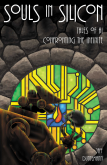Back in June, when Carol and I were in Chicago, we took our nieces to the school playground across the big field behind my sister’s house. We pushed them on the swings, as usual, and I considered that both girls are tall and muscular for their ages. So I asked, “Katie, do you know how to pump?”
“What’s pump?”
“It’s pushing yourself on a swing so nobody else has to push you!”
She looked at me funny. She does that a lot; it’s part of the Uncle Jeff job description. So while pushing her I prepared to answer the obvious question: How do I do that, Uncle Jeff?
I stood there for a second before I realized that I had not pumped a swing for, well, decades. I wasn’t entirely sure I remembered how to do it. I gave Katie an extra big push and jumped onto the swing next to hers.
Shazam! The mind may forget…the body remembers! In thirty seconds I was going way high, and was devising my tutorial for the scarily bright little girl three feet to my left:
As you go forward, pull back on the chains and stretch your feet out. When you start to go back, stop pulling on the chains and pull your feet underneath you.
Wait a minute. Wait one damned minute! How does that work? I mean, I’m not pushing against the ground or anything else, and not hurling reaction mass. I realized that while the body remembered clearly how to pump a swing, the mind could not explain it.
I vaguely and anciently recalled reading something about a swing with a kid on it acting as a parametric oscillator, but the details were just gone. My guess at the time was a good one: When you pump a swing, you’re raising and lowering your center of mass a little by “bending” the pendulum, synchronized to the timing of the swing’s motion. That adds energy during the forward motion of the swing. There are explanations all over the Web, but the one I found by Dr. William Case at Grinnell College was the best, including several short video clips.
It’s an amazingly subtle business.
I’m kicking myself now for not thinking to try the obvious enhancement, which is pushing forward on the chains at the rear extreme of motion. Next time.
Katie didn’t quite get it but she gave it a good shot (heck, I was at least six before my cousin Diane taught me circa 1958) and with a little practice she’ll remember it well past her sixtieth birthday in 2066, and possibly even into the 22nd Century.
Some things are just timeless.











